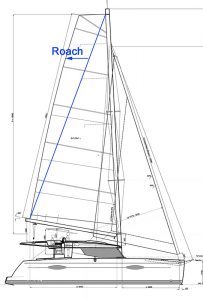 One complaint we have with the Helia is the mainsail. It has a square top (the trailing edge of the sail doesn’t meet the top of the mast) and it has a large “roach”. The roach of a sail is the amount of the sail which extends aft of a line drawn from the top of the mast to end of the boom. The combination of the square top and the roach provide extra sail area for the same mast height but complicates the hoisting of the sail.
One complaint we have with the Helia is the mainsail. It has a square top (the trailing edge of the sail doesn’t meet the top of the mast) and it has a large “roach”. The roach of a sail is the amount of the sail which extends aft of a line drawn from the top of the mast to end of the boom. The combination of the square top and the roach provide extra sail area for the same mast height but complicates the hoisting of the sail.
The main sail is connected to mast with cars which have plastic ball bearings which allow the cars to slide easily on a track attached to the mast. The Helia has a small number of cars (6) which means there is a large distance (more than 10 feet in some cases) between the cars when raising the sail. Because the square top will kick up as it lowered, the top car must be disconnected from the car to fully lower the sail. The problem is this quite a distance off the deck and is too high for Shiera to reach.
After dealing with this headache for awhile after buying the boat, I found a solution with a part called a Gaffe Lock by Karver. This clever device is attached to the top car and allows the sail to detach from mast when lowered and reattach when raised. It does this using a strap on the halyard which pulls into a hook attaching the sail to the car. While it is expensive, it completely solved the problem.
- Starting the halyard
- Strap captured by gaff hook
- Sail fully raised
While the large distances between the lower cars was annoying at times, it wasn’t a huge issue until during a passage to the Bahamas when we were assaulted by a large squall with 45 knots winds. We had numerous squalls during the passage and each had lots of rain but little wind. I had seen this squall approach and it was very dark and threatening. I decided to get the sails down before it hit. I got the jib rolled up but was in the process of lowering the main sail when the squall blasted us. The sail had large billows where the cars were widely spaced and the wind grabbed the bottom billow and ripped the sail from the car. That made a larger billow which then ripped the next car off, and then rest went except the top two. That only lasted a second until the top of sail torn off with a huge crash. Now we had a huge mess, with the entire main flapping in the breeze and in the water. Shiera and I managed to tame the beast and get it back deck as son Grant struggled to keep the boat into the wind with the autopilot trying to turn the boat back on course (this was his first sail on Gemeaux).
The rest of trip was mostly motor sailing after that, but the sail was repairable when we returned to Fort Lauderdale. Under closer inspection, the car attachment is a stainless steel pin which is screwed into a plastic end cap for the batten. The failure happened with the steel pin tore out the threads from the plastic. The solution was to replace the plastic batten caps with stainless steel caps. That should prevent the failure from happening again. Another solution that other Helia owners have pursued is adding several extra cars. Each car would go between the existing cars thereby decreasing the amount of sail which will billow out. The problem is because of the roach of the sail, the car cannot be directly attached to the sail, it needs to have slack to allow the sail to move away from the mast when lowered. The additional cars also raise the top of the sail making it becomes more difficult to reach the top car from the deck.
Our other complaint is reefing the sail. The Helia has three winches. One is used by the main sheet and the other two are shared with the rest of the lines. The main halyard uses the right most winch which is also used by the starboard jib sheet. The center winch is used by the reefing lines to tighten the clew of the sail, but also used by the port jib sheet. The upshot is that both winches are necessary for reefing but one of them will also hold a jib sheet if the jib is up. While it is possible to switch lines during the reef, the jib sheets have lots of pressure so it is also a good way to lose some fingers. We have typically rolled up the jib prior to reefing to free up the winches and then redeploy the jib after the reef is completed.
Finally the foot of the sail is loose, so it only is attached at the mast to the foot and the clew of the sail is attached with a large strap near the end of the boom. This strap creaks a lot when under pressure making Shiera very unhappy. I haven’t figured a good solution for eliminating the creak.
So while we mostly have made peace with the mainsail, we still have complaints we haven’t solved.

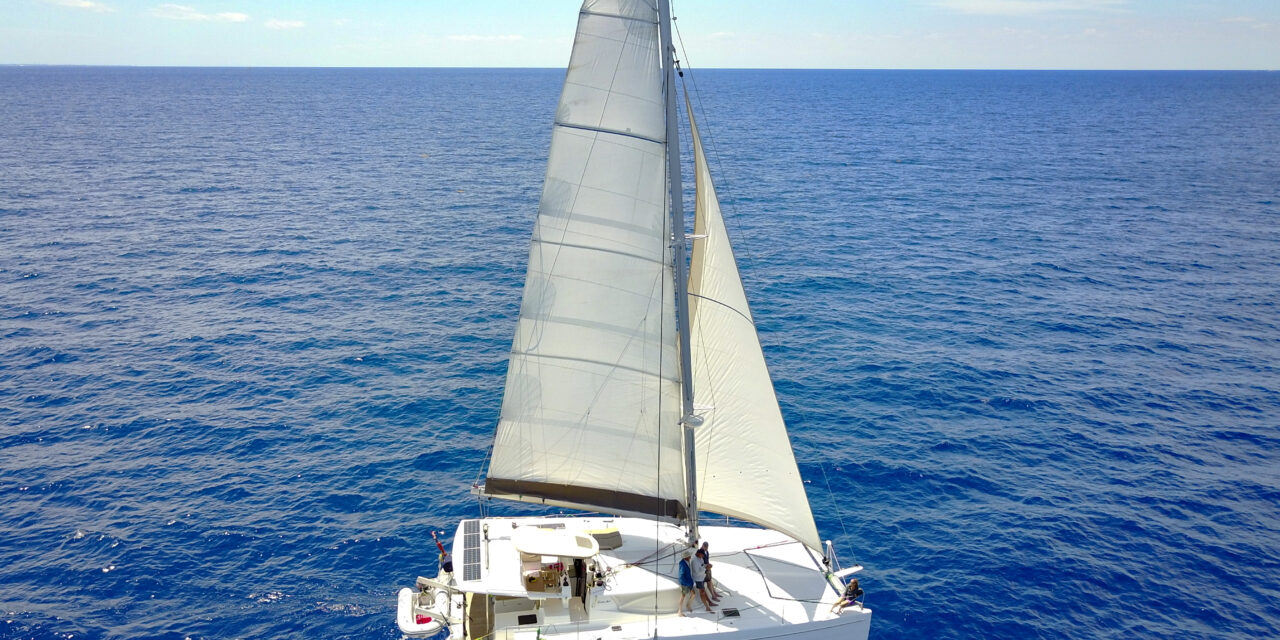
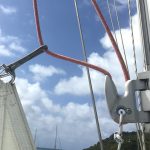
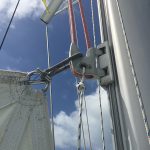
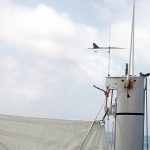
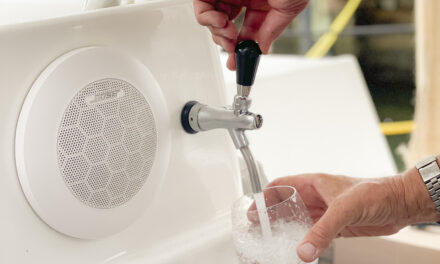
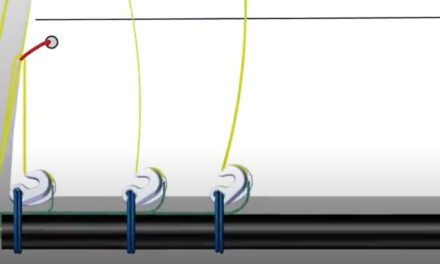
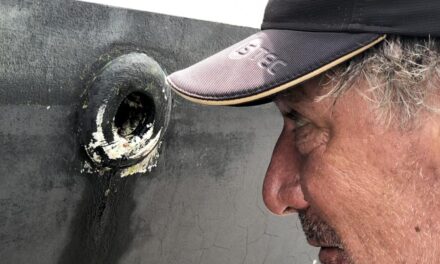
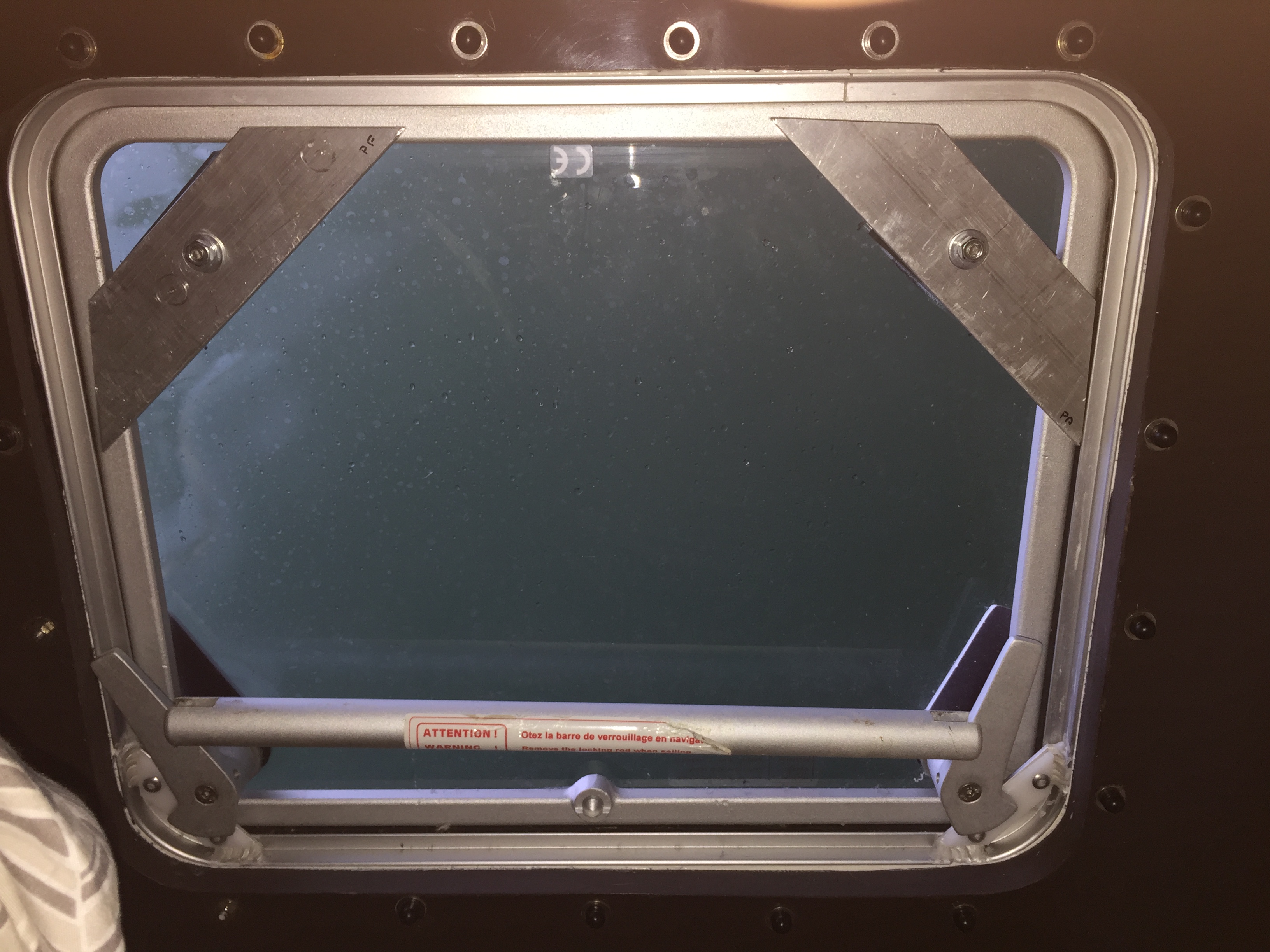



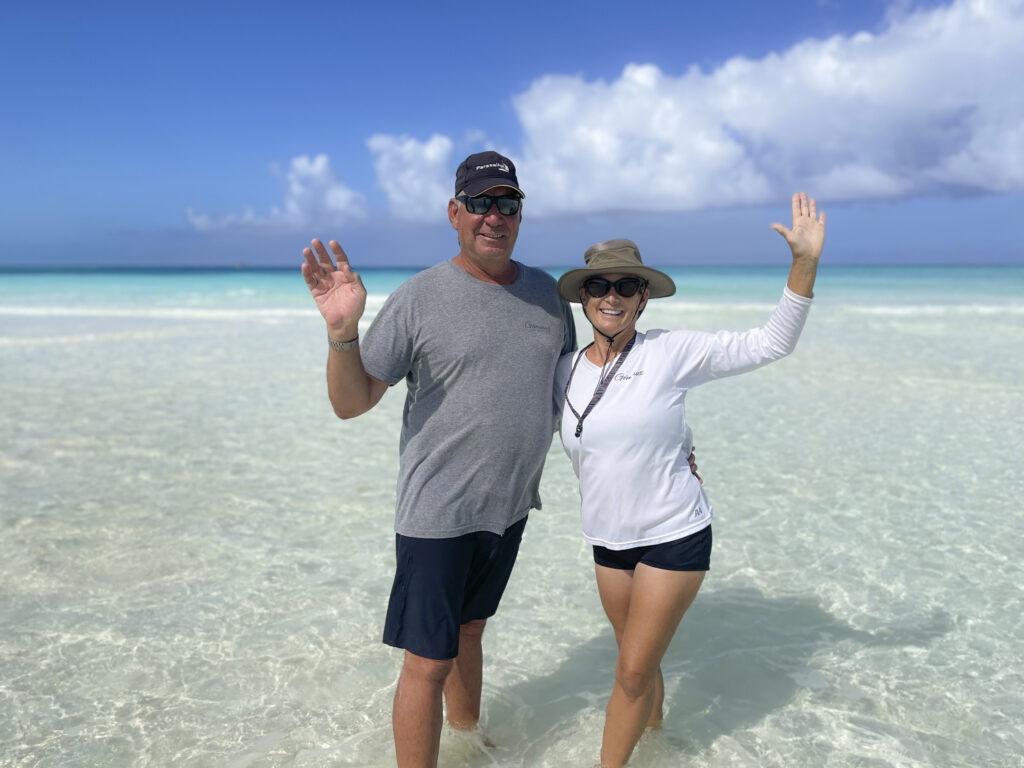
Allen – excellent blog post.
in addition to sharing your frustration with the top car’s connection to the head of the sail, we’ve now had two instances where the bolts that screw into the plastic end caps on the bottom two battens have come off. Reattaching them is a chore. Where did you procure stainless end caps? Is there a part name or number?
Same question for the Karver parts. Do you happen to know what’s needed for that fix? I would like to order everything and bring it with me next time since I doubt I can find them on island in GND.
Thanks, and once again I appreciate the view standing on your shoulders.
Question about the winches being shared for reefing lines and jib sheets: Don’t the lines also go through a clutch? When reefing, can’t you clutch the jib sheet and free up the winch for reefing?
Pat
Allen…just been looking g at karver gaff hooks as well. Found this video at https://youtu.be/ipn5ANjHWdg that may be useful. Don’t know if this contributed to your halyard stripping.
Copied the wrong link for some reason….try this one….https://youtu.be/BU95q3ugYQk